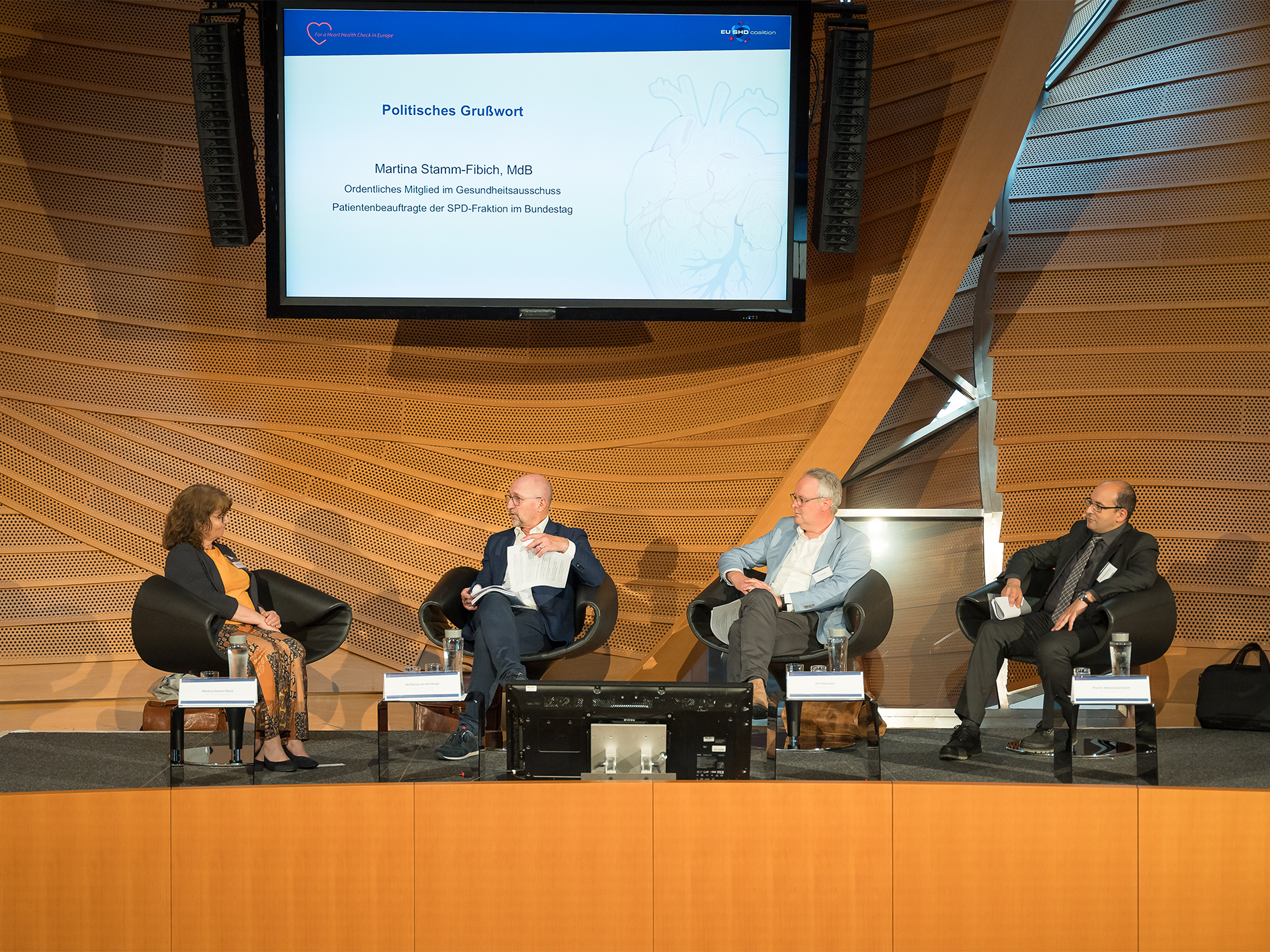On 22 June the SHD Coalition organised an event National prevention Plan: Opportunities for strengthening Early Detection of SHDs in Berlin to demand political guidelines once again for early detection of CVD and SHD.
The two main objectives of the roundtable were to firstly discuss concrete political recommendations of better prevention of SHDs with the relevant political decision-makers and stakeholders. Secondly, the speakers and participants wanted to draw public attention to the often underestimated opportunities of early detection and to the danger of underdiagnosis of valvular heart disease in an ageing society.
The MP Martina Stamm-Fibich, SPD, took over the political patronage and emphasised that primary and secondary prevention of SHD must be better implemented. She said that Germany has a lot of catching up to do in the area of prevention compared to other European countries. She conceded that the state must make more money available for early detection, especially at the GP. Above all, however, she called for a strategy for SHD at the political level.
Besides MP Stamm-Fibich four high-level speakers and experts were invited.
- PD Dr. Mohammad Sherif, member of the SHD Coalition and Head of interventional cardiology and angiology at the German Heart Center at Charité
- Prof. Dr. Ulf Landmesser, Director of Clinic for Cardiology, Angiology and Intensive Care Medicine at German Heartcenter at Charité
- Jens Näuman, CEO of the patient organisation Heart Valve Initiative
- Dr. Christian Graf, Area Coordinator Health Care Management at the statutory health insurance BARMER
Dr Graf painted a rather positive picture of the situation, but acknowledged that early detection pays off economically, while Prof Landmesser noted that there is a significant lack of awareness of the risk of cardiovascular disease in the society that needs to be addressed. Dr Sherif pointed out that early detection is necessary, not only to save costs, but also to achieve better treatment outcomes. The earlier SHD is detected, the higher the probability of successful treatment. Therefore, SHD should be a priority in policy. There must be clear guidelines for diagnosis and treatment steps. Especially for asymptomatic patients, there should be evidence-based guidelines. Data (through research) is needed for this.
Another important point was the question of how to create incentives for doctors, especially general practitioners, to proactively offer these screenings and at the same time how to make the insured aware of the health check-ups. Jens Näumann, who is himself a heart valve patient, believed general practitioners are the linchpin for better early detection. He also wished for better interaction and cross-sectoral thinking and action between the different doctors.
Furthermore, Prof. Landmesser added that science is far ahead of practice and that there needs to be a transfer of knowledge from CVD research to practice. Digital transformation and AI could be a support in this, as they offer great potential, especially personalised risk detection.
Overall, moderator Wolfgang van den Bergh summarised four key recommendations for policy makers.
· Adoption of uniform guidelines for early detection by policymakers and the joint federal committee
· Creating incentives for general practitioners to carry out screening systematically and incentives for patients to take advantage of screening.
· Intersectoral cooperation and communication
· Media campaigns to raise awareness of early detection of CVD and SHD

